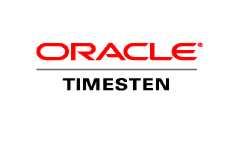| New Release of Oracle's TimesTen |
| Written by Kay Ewbank |
| Thursday, 26 January 2012 |
|
Oracle has released the latest version of its in-memory database, Oracle TimesTen In-Memory Database, 11g Release 2. As the name suggests, TimesTen keeps all its data in RAM, though copies are also stored on disk in case of problems such as losing power. The software was originally developed by HP labs, then carried on by a separate company before being acquired by Oracle. It has been popular in applications where really fast response times are necessary. This latest version promises significant performance and scalability improvements for real-time online transaction processing (OLTP) apps. In an effort to stave off competition from rivals such as SAP, TimesTen has added features to support real-time analytic apps. Scalability has also been improved with support for more concurrent users, higher volumes of requests, and more sessions.
Exalytics (announced at OracleWorld in October) consists of TimesTen, Essbase, and Oracle BI server running on hardware consisting of a 4-socket, 48-core server with 1TB of DRAM and an Infiniband connection to Exadata. TimesTen, despite its upgrade, has not been intensively developed since it was taken over by Oracle in 2005, and Hyperion Essbase is also seen as old technology. By contrast, SAP HANA (High-Performance Analytic Appliance) has been designed as one product from the outset, and needs less in the way of hardware. SAP is also chasing the developer market with plans to bring out and SDK this year that will include blueprints and templates for developers, showing both how to alter legacy apps to run on the new technology, and to create new in-memory apps. Back with Oracle, the new release of TimesTen offers new SQL aggregation and analytic functions as well as optimisation for complex query processing. It also offers better compatibility with Oracle Database through support for native large object data types. More InformationOracle TimesTen In-Memory Database
Comments
or email your comment to: comments@i-programmer.info
To be informed about new articles on I Programmer, subscribe to the RSS feed, follow us on Google+, Twitter, Linkedin or Facebook or sign up for our weekly newsletter.
|
| Last Updated ( Thursday, 26 January 2012 ) |
 A version of TimesTen for Exalytics is also being released to run on Oracle Exalytics In-Memory Machine as an application-tier in-memory database cache. This goes head-to-head with SAP HANA, and fans of the latter criticise the Exalytics architecture as being out-dated and expensive.
A version of TimesTen for Exalytics is also being released to run on Oracle Exalytics In-Memory Machine as an application-tier in-memory database cache. This goes head-to-head with SAP HANA, and fans of the latter criticise the Exalytics architecture as being out-dated and expensive.
